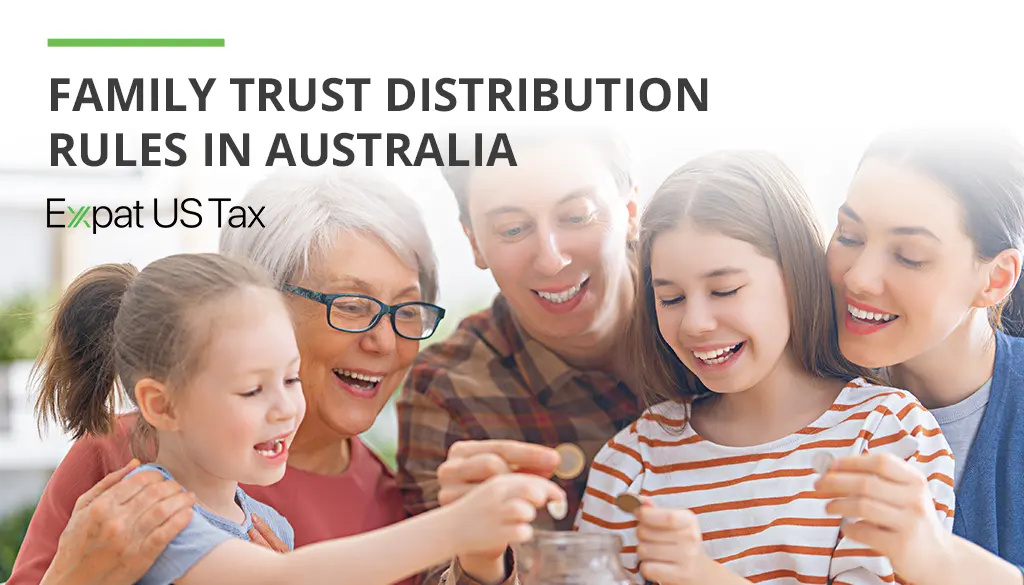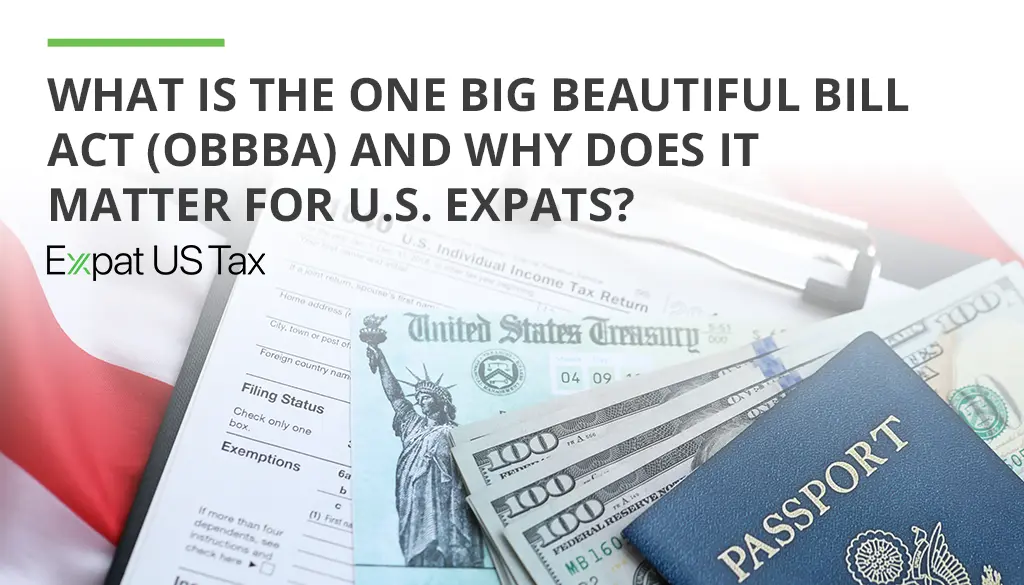Family Trust Distribution Rules


Nick Wee, an IRS Enrolled Agent with 18 years of expat tax experience, specializes in US tax preparation, tax planning, and tax advice for US citizens and Green Card holders living and working in Australia. *Schedule a consultation with Nick today.
*30-minutes US$437.
Table of Contents
Family trust distribution rules in Australia: A guide for US expats
Family trusts are among the most common types of discretionary trusts in Australia. This is because family trusts help individuals with significant amounts of wealth manage their assets and reduce their Australian tax obligations.
However, this is not always the case for US expats. Family trusts can become complicated, especially with cross-border tax reporting and distribution rules.
Why are family trusts common in Australia?
Family trusts are widely used in Australia for several reasons, but mainly for:
- Tax flexibility: The trustee has the discretion to choose who receives income each year. To reduce taxes, distributing income to family members in lower tax brackets may reduce the overall family tax bill because they can utilize a tax-free threshold.
- Asset protection: When you place assets (like property, investments, or cash) into a trust, they are no longer legally owned by you–they’re owned by the trust itself. This separation provides a layer of protection in situations such as:
- Business or professional risks
- Relationship breakdowns
- Legal disputes
- Succession planning: Trusts help families transfer wealth across generations, avoiding probate, inheritance issues, and costly transfer taxes.
📣 For US expats! While family trusts are common in Australia, the IRS does not recognize this structure and treats them very differently for tax purposes.
What are the family trust distribution rules in Australia?
Here are the key distribution rules:
- Beneficiaries must be named in the deed or fall within a defined class (e.g. spouse, children, or company controlled by the family).
If the trustee distributes income to someone not covered by the deed, the distribution is invalid for tax purposes and might even trigger severe penalties.
- Distributions must be resolved before June 30 each year to be valid for tax purposes. This is known as a distribution resolution.
If the trustee misses the June 30 deadline or doesn’t document the decision properly, the income is then considered undistributed and the trust itself must pay tax at the highest marginal rate (currently 45%) on that income.
- Minors are taxed at higher rates on trust income, often up to 45% on amounts above AU$1,308. While family trusts are often used to split income among family members, there are strict limits when it comes to children under 18.
This is known as the “penalty tax rate” for minors, and it exists to stop families from shifting large amounts of income to children just to reduce overall tax.
📣 Note! Income distributed from a trust is taxed in the hands of the beneficiary, not the trust.
A family trust has a trustee who manages how much and to whom the trust’s assets are distributed each year. These decisions must follow the trust deed, a legal document that outlines who can benefit from the trust.

Need help with family trust distributions in Australia? Ask our team.
What is a Family Trust Election (FTE)?
A Family Trust Election (FTE) is a formal declaration made to the Australian Taxation Office (ATO) that identifies a trust as a “family trust” for tax purposes. By making this election, the trust nominates one individual, called the “test individual,” and then defines a “family group” based on that person.
Once the FTE is active, the trust can access tax benefits like carried-forward loss deductions, simplified company tracing, and franking credits.
Advantages of an FTE:
- Allows tax deductions for carried-forward losses
If the trust or a related company had prior-year losses, they can be used to reduce future taxable income. - Access to franking credits
The trust can pass on franking credits from dividends received, helping beneficiaries reduce their tax. - Simplifies company loss and credit tracing
FTE status makes it easier to apply tax rules to companies or entities linked to the trust.
Disadvantages of an FTE:
- Distributions are restricted to the family group
After making an FTE, the trust can only distribute income or capital to those in the nominated family group. - Penalty tax for distributions outside the family group
If the trust distributes income to anyone outside the approved group, it must pay Family Trust Distribution Tax (FTDT) at a flat rate of 47%, even if the mistake was unintentional. - No exceptions or leniency
The ATO applies FTDT strictly. There is no grace period or way to fix mistakes after a distribution to someone outside the family group.
📣 Bottom line: This route is optional, but most elect to take it because of the significant tax advantages despite the stricter regulations around it.
How the IRS treats Australian family trust distributions
The Internal Revenue Service (IRS) typically classifies an Australian family trust as a foreign grantor trust when it is created or controlled by a US citizen or Green Card holder.
Under this classification:
- The US grantor is taxed on all trust income, even if the income is distributed to another person in Australia.
- The trust income is not eligible for the Foreign Earned Income Exclusion (FEIE).
- Foreign Tax Credits (FTCs) may not fully offset US tax, especially if the income is paid to a non-US beneficiary.
- The IRS taxes the US person as if they received the trust income directly, even if someone else gets the money.
📣 Bottom line: The IRS discourages tax deferral and income shifting through foreign trusts. US taxpayers are generally taxed on all earnings within the trust, regardless of distribution.
US tax reporting requirements for foreign trusts
If you are a US expat with an interest in an Australian family trust, you are generally required to file the following forms:
- Form 3520: “Annual Return to Report Transactions with Foreign Trusts and Receipt of Certain Foreign Gifts”. This is required when you receive distributions or transfer money to a foreign trust.
- Form 3520-A: “Annual Information Return of Foreign Trust with a US Owner”. This is required every year by the foreign trust itself (or by the US person on its behalf).
Penalties for non-compliance:
- Minimum US$10,000 per missing form.
- Additional penalties may apply if the IRS considers the omission willful or as an attempt to hide assets.
FAQs
What is the 47% family trust distribution tax?
The 47% family trust distribution tax (FTDT) applies when a trust with a Family Trust Election (FTE) distributes income to someone outside the defined family group.
Do US citizens have to report Australian family trusts?
What happens if I don’t file Form 3520?
Can I distribute trust income to my US-based child?
Does the IRS recognize family trust structures from Australia?



